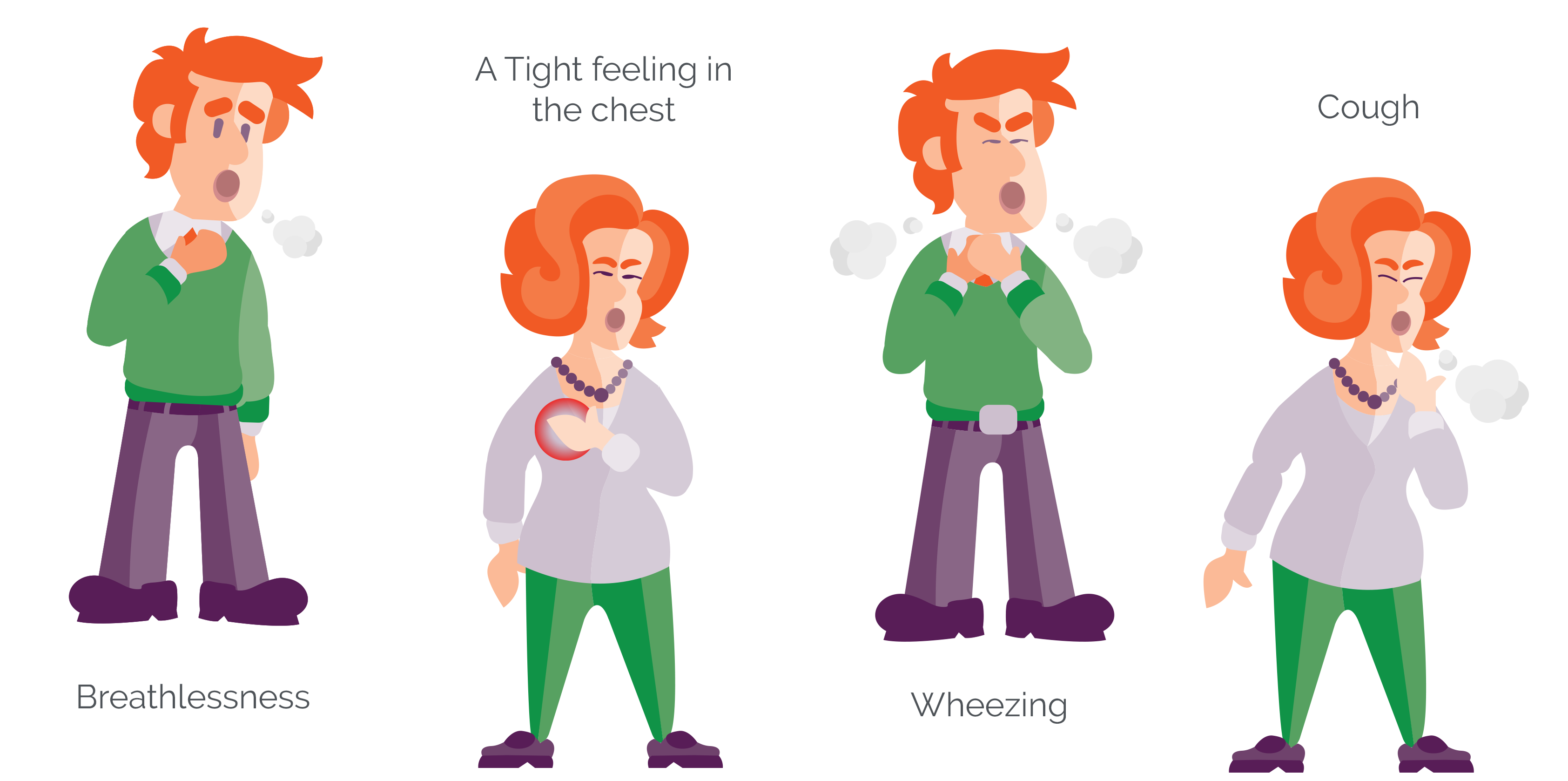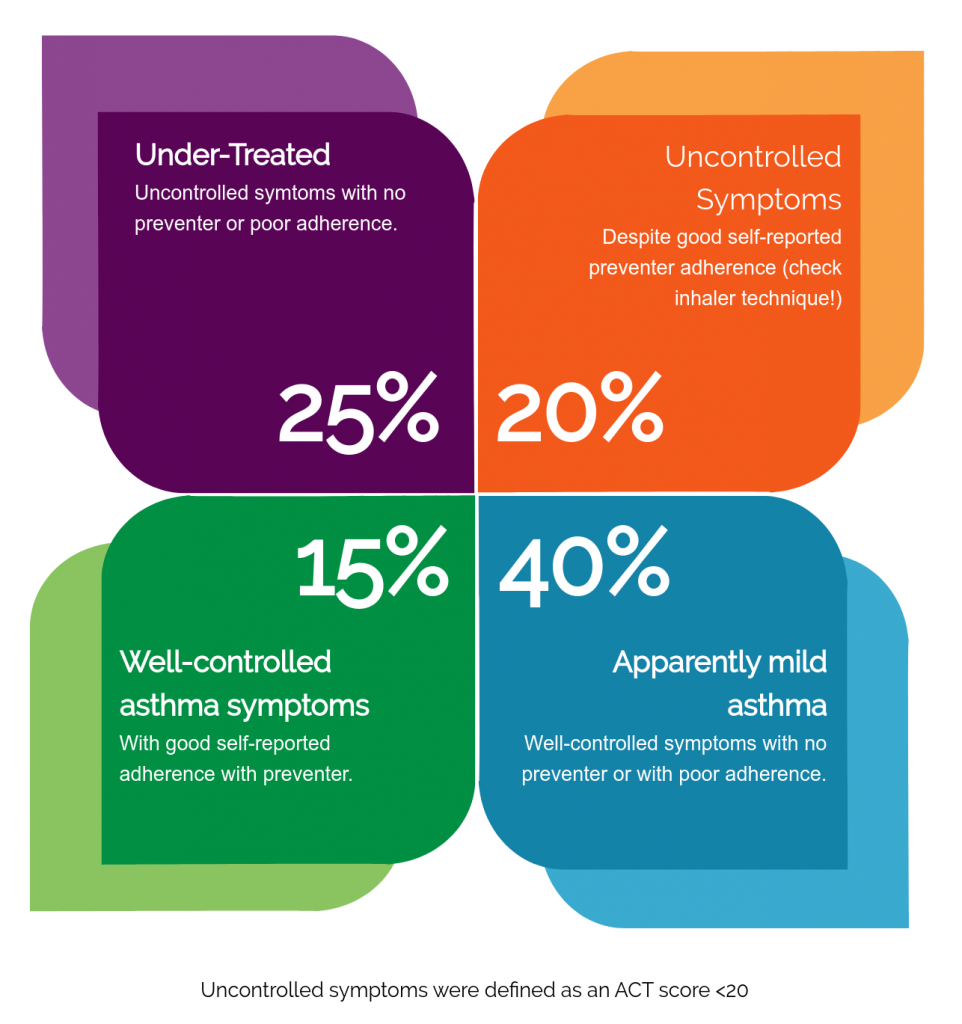Symptoms of asthma can vary over time and between individuals.
Typical symptoms include:
- Breathlessness
- A tight feeling in the chest
- Wheezing
- Cough
Symptoms are:
- Commonly worse at night or in the early morning
- May be triggered by a specific agent (e.g. allergen, exercise or respiratory infection) or
- By non-specific factors such as weather changes or irritants such as air pollution.
When asthma is well-controlled, individuals should experience few asthma symptoms. However, by definition, symptoms in people with severe asthma remain uncontrolled despite optimal treatment, or can only be well-controlled while high dose treatment is sustained.
People with severe asthma experience ongoing symptoms. In Australia, about 45% of adults with a diagnosis of asthma have frequent symptoms (this is called poor symptom control), and about one quarter need to have an urgent visit to their doctor or to a hospital in a year, because of their asthma (Reddel et al. 2015).


